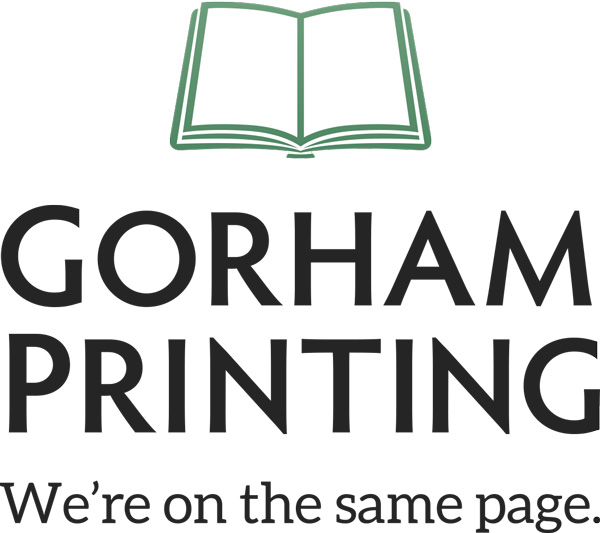Printing the book you have spent countless hours designing, writing, editing, and re-writing is like the cherry on top of the sundae. It is when you finally get to see your vision come to life, something you can physically hold on to, show off, and share with loved ones. Printing a book comes with many options, from sizing to the material to the structure of the cover. Today, we will share with you the pros and cons of paperback versus hardcover book binding, the price differences, and how you should ultimately choose which option is right for your book.

Pros & Cons of Paperback vs. Hardcover Book Binding
When choosing between paperback versus hardcover book binding, we recommend analyzing which of the following four elements is the most important to you. If you ever need book printing, consider the book printing experts at Gorham Printing.
Level of Fanciness:
Hardcover books feel fancier than paperback books. The extra weight and material make your book feel more substantial and worth more. When people take to collecting books and building a library, it primarily consists of hardcover books to create that air of aristocratic authority.
On the flip side of the coin, paperbacks often feel more intimate. Readers enjoy curling up on the couch with their paperback books and devouring the content. They may get written in or have the pages turned down as bookmarks; an action few will take in a hardcover.
Durability & Longevity of the Material:
Hardcover books far surpass paperback books in durability and longevity. Books throughout the ages that have stood the test of time have been hardcovers. In addition to your fancy collector books, hardbacks are often chosen for books that need to be durable, such as textbooks, children’s books, cookbooks, and coffee table books. If you want your readers to hold on to your book for years to come, hardbacks will often get taken along when moving from house to house.
Paperback books are significantly harder to keep in good shape, especially if the reader or environment is not particularly careful. Paperbacks can look tired and worn out over time, with curling edges, nicks, and scuffs. Therefore, they are often chosen for genres where a reader may read it once or twice and then be done with it, such as fiction. These books are more likely to get shared or donated, especially if the reader moves houses.

The Practicality of Paperback vs. Hardcover:
Yes, hardback books are fancier and more durable than their paperback cousins, but that isn’t always practical. Hardcover books are heavy, making it more difficult for the reader to carry around with them and even hold up while reading. There is a reason why you often see students hunching over their textbooks instead of leaning back with them in their hands; it is just too heavy to be comfortable doing for hours on end.
Practicality should be a significant consideration when debating between hardcover or paperback. If you want your book to be pliable, easy to pack with the reader, and to be devoured quickly, a paperback is the way to go!
Competition with Other Authors
Paperback books are far more common than hardcover due to their size, weight, and price. If you choose to go paperback, you will face greater competition than if you went with hardcover books. At the same time, you may have a greater opportunity to be chosen since shipping, storing, stocking, and buying your book will be cheaper. It is a double-edged sword whose battle relies heavily on the store type, book genre, and target audience.
The Cost Difference Between Paperback & Hardcover Book Printing
When printing a book, the cost is a huge factor for many authors. As you would likely suspect, there is a significant difference in printing and shipping paperback versus hardcover books. On average, a printed hardcover book is going to cost almost three times as much as a softcover book due to the extra materials and more extensive book binding process. Of course, this doesn’t include any special features or materials; it is just a printed hardcover.
Paperback vs. Hardcover Shipping Price Comparison
Unfortunately, there is no cut-and-dry cost estimate for shipping, as it will depend on where the package is going. However, we guarantee that shipping an order of hardcover books will be far more expensive than paperback due to the sheer weight difference. However, there is a way around this expense: free shipping bonuses.
At, Gorham Printing, we offer free shipping to customers who place print orders of 150+ books, saving customers hundreds of dollars! Plus, we take great care to ensure that your books arrive to you safely and damage-free!

How to Choose Between Paperback vs. Hardcover:
In the end, the ultimate question will be, “what’s right for my book?” We recommend focusing on the genre of book you are publishing and how you want the book to be used. If you are publishing a cookbook, textbook, or children’s book, you will likely want to choose the hardcover option. However, if you are producing a science fiction, romance, or novel of some sort, you will likely want to utilize paperback book bindings.
Printing Your Book with Gorham
We have been aiding writers in publishing their books since 1976. With a reputation for excellent service, quality production, and straightforward price navigation, you can rest assured that your book is in good hands.
If you have a strict budget for printing, we recommend playing around with the pricing tool. In this tool, you can mix and match a variety of options to see what works best for your vision and wallet. Alternatively, you can grab a quick estimate by looking at their ballpark price chart. Remember, you can always reach out directly to Gorham Printing with your questions and concerns prior to printing.




